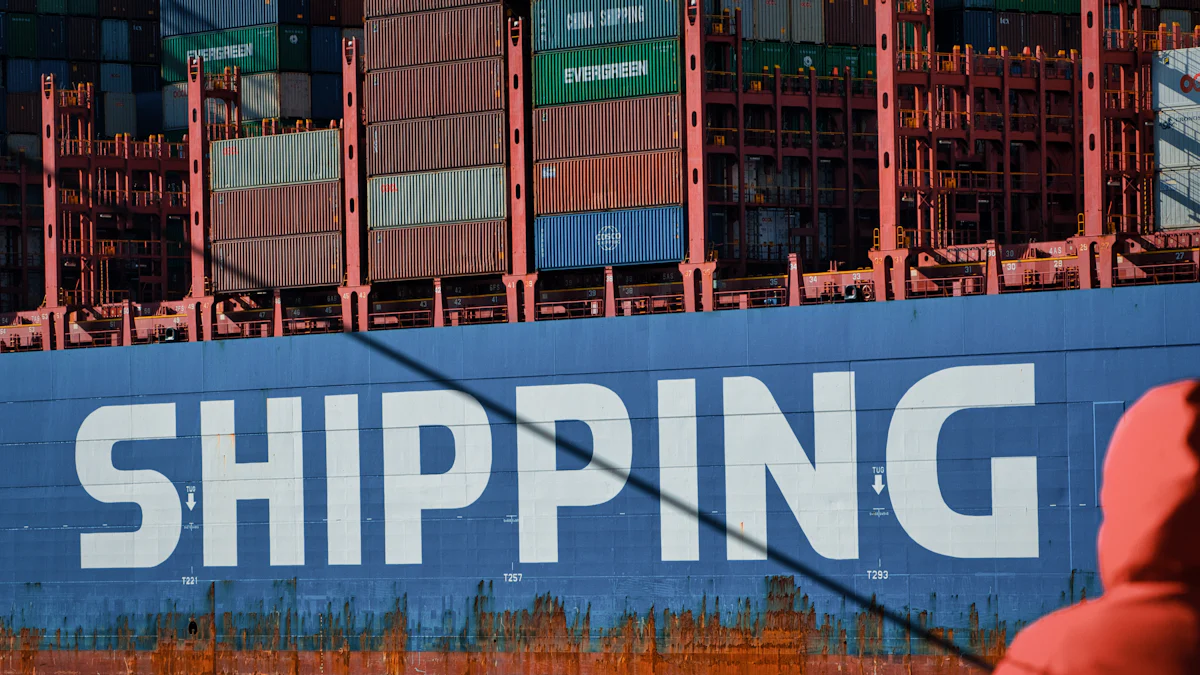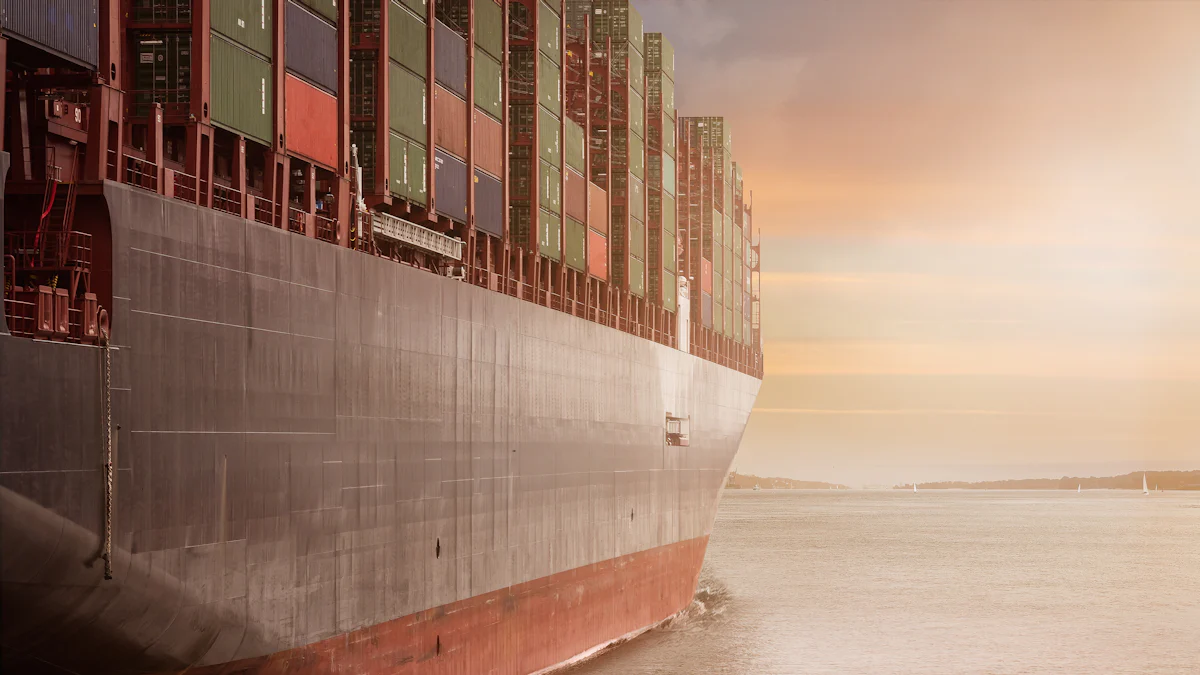5 Tips for Streamlining Global Logistics Processes

Efficient Global Logistics plays a crucial role in today's interconnected world. According to a report by market research firm Allied Market Research, the global logistics market is projected to generate over $16.79 trillion in revenue by 2032. The report indicates that the global logistics industry created more than $9.83 trillion in revenue in 2022, suggesting that the industry will grow at a Compound Annual Growth Rate (CAGR) of 5.6% from 2023 to 2032. However, managing Global Logistics presents significant challenges. Companies face issues like fluctuating demand, complex supply chains, and regulatory compliance. Streamlined processes become essential to enhance efficiency and reduce costs. By adopting advanced technologies and optimizing operations, businesses can stay competitive and meet market demands effectively.
Implement Advanced Technology in Global Logistics

Utilize Automation in Global Logistics
Automated Warehousing Systems
Automated warehousing systems revolutionize Global Logistics. These systems use advanced technology to manage inventory, streamline operations, and reduce human error. Many third-party logistics firms have embraced warehouse automation. Companies invest in automated technology and robotics to cut costs and enhance worker efficiency. Automated systems handle tasks like sorting, loading, unloading, and transportation. This automation boosts customer satisfaction by minimizing errors and speeding up processes.
Robotics in Order Fulfillment
Warehouse Robotics play a crucial role in modern order fulfillment. Robots assist with picking tasks, packaging, and inventory management. By integrating robots, warehouses can optimize logistics and accelerate operations. Robots also improve safety and efficiency. The use of robotics addresses challenges like complex supply chain management and labor shortages. As technology advances, robots may even handle deliveries to customers, further enhancing the efficiency of Global Logistics.
Leverage Data Analytics
Predictive Analytics for Demand Forecasting
Predictive analytics transform Global Logistics by providing accurate demand forecasts. Companies use data analytics to predict future demand patterns. This helps in planning inventory levels and production schedules. Predictive analytics reduce the risk of overstocking or stockouts. Accurate demand forecasting leads to better resource allocation and cost savings. Businesses can respond quickly to market changes, maintaining a competitive edge.
Real-time Tracking and Monitoring
Real-time tracking and monitoring enhance visibility in Global Logistics. Companies use data analytics to track shipments and monitor supply chain activities. Real-time data provides insights into the location and status of goods. This visibility helps in identifying potential delays or issues. Companies can take proactive measures to mitigate risks. Real-time tracking improves customer satisfaction by providing accurate delivery information. Enhanced visibility leads to more efficient and reliable logistics operations.
Optimize Supply Chain Management
Enhance Supplier Relationships
Collaborative Planning and Forecasting
Collaborative planning and forecasting strengthen Global Logistics. Companies and suppliers work together to predict demand and plan inventory. This collaboration reduces the risk of overstocking or stockouts. Accurate forecasts lead to better resource allocation. Businesses can respond quickly to market changes. Enhanced supplier relationships improve overall efficiency.
Supplier Performance Metrics
Supplier performance metrics provide valuable insights into Global Logistics. Companies track key performance indicators (KPIs) to evaluate suppliers. Metrics include delivery times, quality of goods, and cost-effectiveness. Regular assessments help identify areas for improvement. Businesses can address issues promptly. Strong supplier performance leads to smoother operations and higher customer satisfaction.
Improve Inventory Management
Just-in-Time Inventory Systems
Just-in-Time (JIT) inventory systems revolutionize Global Logistics. JIT minimizes inventory levels by receiving goods only when needed. This approach reduces storage costs and waste. Companies maintain leaner inventories and improve cash flow. JIT systems enhance flexibility and responsiveness. Businesses can adapt to changing market demands efficiently.
Inventory Optimization Software
Inventory optimization software enhances Global Logistics by automating inventory management. Advanced algorithms analyze data to optimize stock levels. Software solutions like JUSDA provide real-time insights into inventory status. Companies can make informed decisions on restocking and order quantities. Optimized inventory management reduces holding costs and improves service levels. Businesses achieve greater efficiency and profitability.
Streamline Transportation Processes

Efficient Route Planning
Route Optimization Software
Route optimization software enhances Global Logistics by determining the most efficient routes for transportation. This software analyzes various factors such as distance, traffic conditions, and delivery schedules. Companies can reduce fuel consumption and delivery times. Optimized routes lead to cost savings and improved customer satisfaction. Businesses can also minimize environmental impact by reducing carbon emissions.
Real-time Traffic Updates
Real-time traffic updates play a crucial role in Global Logistics. Companies use real-time data to monitor traffic conditions and adjust routes accordingly. This proactive approach helps avoid delays caused by traffic congestion or accidents. Real-time updates ensure timely deliveries and enhance overall efficiency. Businesses can maintain high service levels and meet customer expectations consistently.
Multi-modal Transportation Solutions
Combining Air, Sea, and Land Transport
Combining air, sea, and land transport offers a comprehensive solution for Global Logistics. Each mode of transport has unique advantages. Air transport provides speed, while sea transport offers cost-effectiveness for bulk shipments. Land transport ensures flexibility and accessibility. By integrating these modes, companies can optimize their logistics strategies. Multi-modal solutions enhance reliability and reduce transit times.
Cost-benefit Analysis of Different Modes
A cost-benefit analysis of different transportation modes is essential for Global Logistics. Companies must evaluate factors such as cost per unit, transit time, and on-time delivery rates. Rail transport may offer lower costs for long distances, while trucking provides faster delivery for shorter routes. Analyzing these metrics helps businesses make informed decisions. The right choice of transport mode leads to significant cost savings and operational efficiency.
Enhance Communication and Collaboration
Integrated Communication Platforms
Cloud-based Collaboration Tools
Cloud-based collaboration tools revolutionize global logistics. These tools provide a centralized platform for all stakeholders. Companies can share documents, track progress, and communicate in real-time. This transparency eliminates inefficiencies and enhances operational efficiency. Jane Richardson, PhD, emphasizes the importance of clear communication. She states, "Effective communication distinguishes successful operations from ineffective ones." Cloud-based tools ensure that everyone stays informed and aligned.
Real-time Communication Channels
Real-time communication channels are essential for efficient logistics. Instant messaging and video conferencing allow quick decision-making. Companies can address issues immediately without delays. Real-time communication fosters a proactive approach to problem-solving. Operational efficiency improves when teams can collaborate instantly. Businesses can maintain high service levels and meet customer expectations.
Cross-functional Team Coordination
Regular Inter-departmental Meetings
Regular inter-departmental meetings enhance coordination. These meetings provide a platform for sharing updates and aligning goals. Each department can discuss challenges and propose solutions. This collaborative approach ensures that everyone works towards common objectives. Improved coordination leads to smoother operations and higher efficiency. Companies can respond quickly to market changes and customer demands.
Shared Performance Metrics
Shared performance metrics drive accountability and transparency. Companies can track key performance indicators (KPIs) across departments. Metrics include delivery times, order accuracy, and customer satisfaction. Regular assessments help identify areas for improvement. Teams can address issues promptly and work towards common goals. Strong performance metrics lead to better decision-making and enhanced efficiency.
Jane Richardson, PhD, highlights the importance of transparent communication. She notes, "Fostering transparent communication eliminates inefficiencies."
Effective communication and collaboration are vital for streamlining global logistics. By integrating advanced tools and fostering teamwork, companies can achieve higher efficiency and customer satisfaction.
Focus on Regulatory Compliance
Stay Updated with International Trade Laws
Regular Training and Updates
Regular training ensures that staff stay informed about international trade laws. Companies must provide ongoing education to employees. Training sessions should cover the latest regulations and compliance requirements. Employees gain the knowledge needed to navigate complex Global Logistics frameworks. Continuous updates help prevent costly errors and legal issues.
Compliance Management Software
Compliance management software simplifies adherence to trade laws. This technology automates the monitoring of regulatory changes. Companies can track compliance status in real-time. Software solutions reduce the risk of non-compliance. Businesses maintain accurate records and documentation. Automated systems enhance efficiency and accuracy in Global Logistics operations.
Efficient Customs Clearance Processes
Pre-clearance Programs
Pre-clearance programs expedite customs processes. These initiatives allow goods to clear customs before reaching the destination country. Companies benefit from reduced wait times and faster deliveries. Pre-clearance improves the flow of goods in Global Logistics. Businesses achieve higher customer satisfaction through timely shipments.
Documentation Management Systems
Documentation management systems streamline customs clearance. These systems organize and store all necessary documents electronically. Companies can access and share documents quickly. This reduces delays caused by missing or incorrect paperwork. Efficient document management enhances overall Global Logistics performance. Businesses ensure compliance with international trade laws.
Streamlining Global Logistics processes remains crucial for businesses aiming to stay competitive. Implementing the discussed tips can significantly enhance operational efficiency and reduce costs. Companies that adopt advanced technologies and optimize supply chain management will see substantial improvements. Enhanced communication and regulatory compliance also play vital roles in achieving these goals. The future of Global Logistics will likely involve more automation and data-driven decision-making. Businesses must stay updated on industry trends to maintain a competitive edge. Embracing these strategies will ensure long-term success in the ever-evolving logistics landscape.
See Also
Optimizing Strategies for Supply Chain Challenges in High-Tech Manufacturing
Unleashing Cost Savings: Insider Tips for Efficient Supply Chain Management
Upcoming Trends for Enhanced Supply Chain Efficiency
Reducing Costs: A Comprehensive Guide to Logistics Efficiency
Transforming Logistics: How Supply Chain Innovation is Changing the Game
